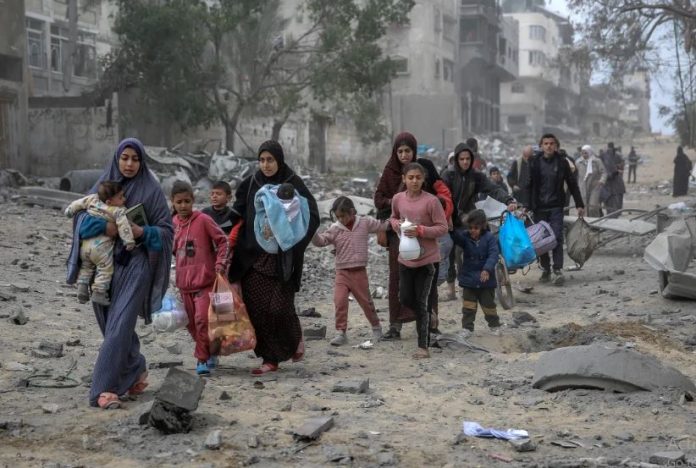DM Monitoring
GAZA: Efforts to hammer out a temporary truce in Gaza intensified Tuesday after months of war that have left parts of the devastated territory facing imminent famine.
A UN-backed assessment described the increasingly dire situation by noting that without a surge of aid famine would hit the 300,000 people in Gaza’s war-battered north by May.
Gaza’s 2.4 million people are trapped in the fighting, which again flared at the territory’s biggest hospital Al-Shifa as an Israeli raid stretched into Tuesday.
But positive signals have been reported from negotiations for a new truce that would include an exchange of hostages for prisoners and increased aid deliveries.
US media outlet Axios said the opening session of talks in Doha was “positive”, citing what it called a source with direct knowledge of the negotiations.
“Both parties came with some compromises and willingness to negotiate,” the source said, according to the report.
There have been no public announcements from Monday’s scheduled talks between Israel’s spy chief David Barnea and Egyptian and Qatari mediators.
The new truce push follows the latest proposal from Hamas for a six-week ceasefire, vastly more aid into Gaza and the initial release of about 42 hostages in exchange for Palestinian prisoners held by Israel.
During the proposed truce, Israeli forces would withdraw from “all cities and populated areas” in Gaza, according to a Hamas official.
The talks in the Qatari capital are the first since weeks of intense negotiations involving Egyptian, Qatari and US mediators failed to secure a truce between Israel and Hamas for the holy month of Ramadan, which began last week.
US Secretary of State Antony Blinken will travel to Saudi Arabia and Egypt this week to discuss the truce push and ways to step up deliveries of desperately needed relief supplies.
“According to the most respected measure of these things, 100 percent of the population in Gaza is at severe levels of acute food insecurity, Blinken said on visit to the Philippines Tuesday.
“That’s the first time an entire population has been so classified.”
The devastating war since Hamas’s October 7 attack on Israel has left roughly half of Gazans — around 1.1 million people — experiencing “catastrophic” hunger, a UN-backed food security assessment warned.
International pressure has grown for Israel to do more to protect civilian lives.
US President Joe Biden, a key backer of Israel, told Israeli Prime Minister Benjamin Netanyahu to send a team to Washington to discuss how to avoid an all-out assault in the southern Gaza city of Rafah.
Netanyahu has insisted on sending troops into Rafah to root out Hamas in the area that borders Egypt and Israel.
But the roughly 1.5 million Gazans crammed into the territory’s southernmost tip have the Mediterranean Sea to their west and sealed borders to the south and east, while Israeli forces are poised to push in from the north.
During its raid on Al-Shifa more than 20 persons were killed inside the hospital complex and another 20 were killed in the surrounding area.
Witnesses reported air strikes and tanks near the complex crowded with thousands of displaced people, as well as the sick and wounded.
The Israeli army identified one of the dead as Hamas internal security official Fayq al-Mabhouh. A Gaza police source confirmed his death and said he was a brigadier general in the force.
Israeli troops previously raided Al-Shifa in November, sparking an international outcry.
In Washington, White House National Security Advisor Jake Sullivan reported the death of senior Hamas official Marwan Issa.
Israel had on March 11 said an air strike on an underground compound in central Gaza targeted Issa, whom it called the deputy head of Hamas’s armed wing. At the time it was unclear if he had been killed.




